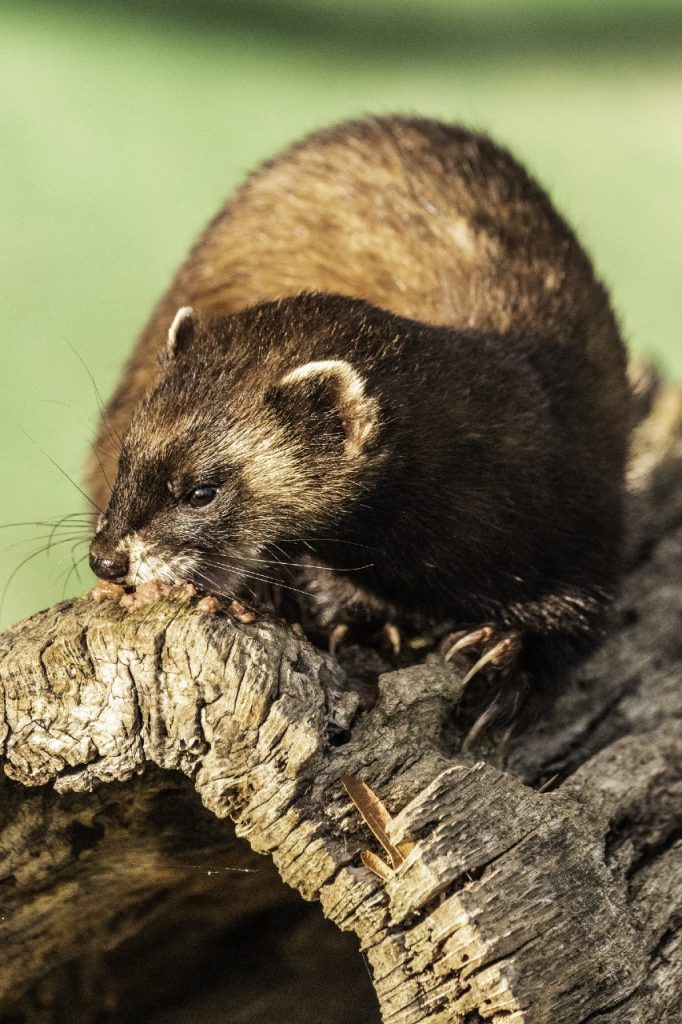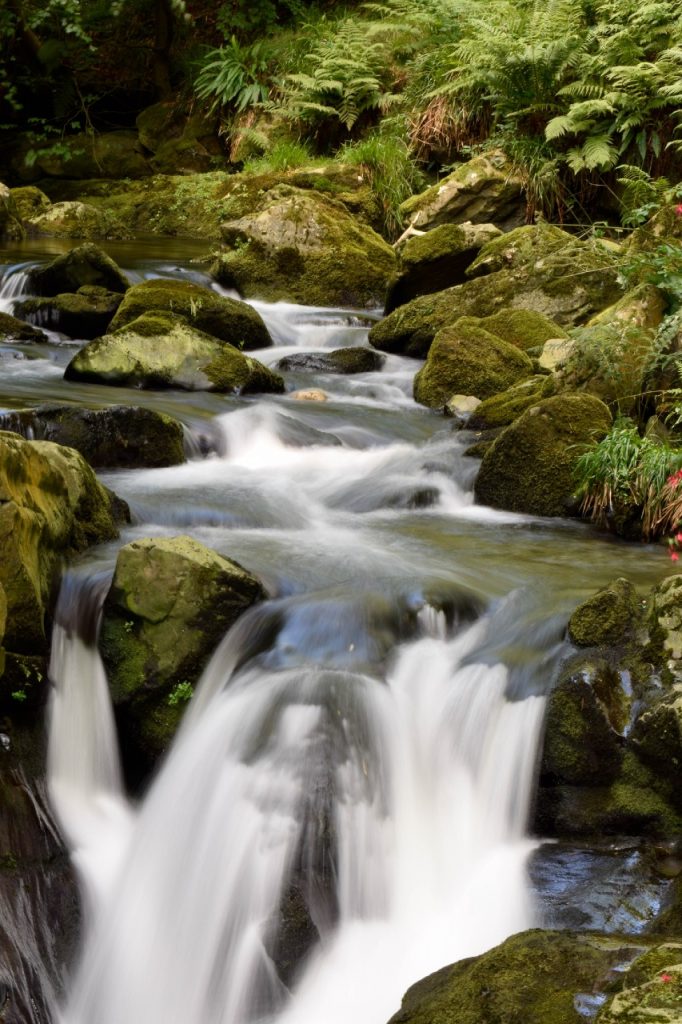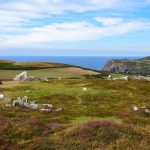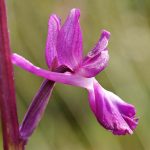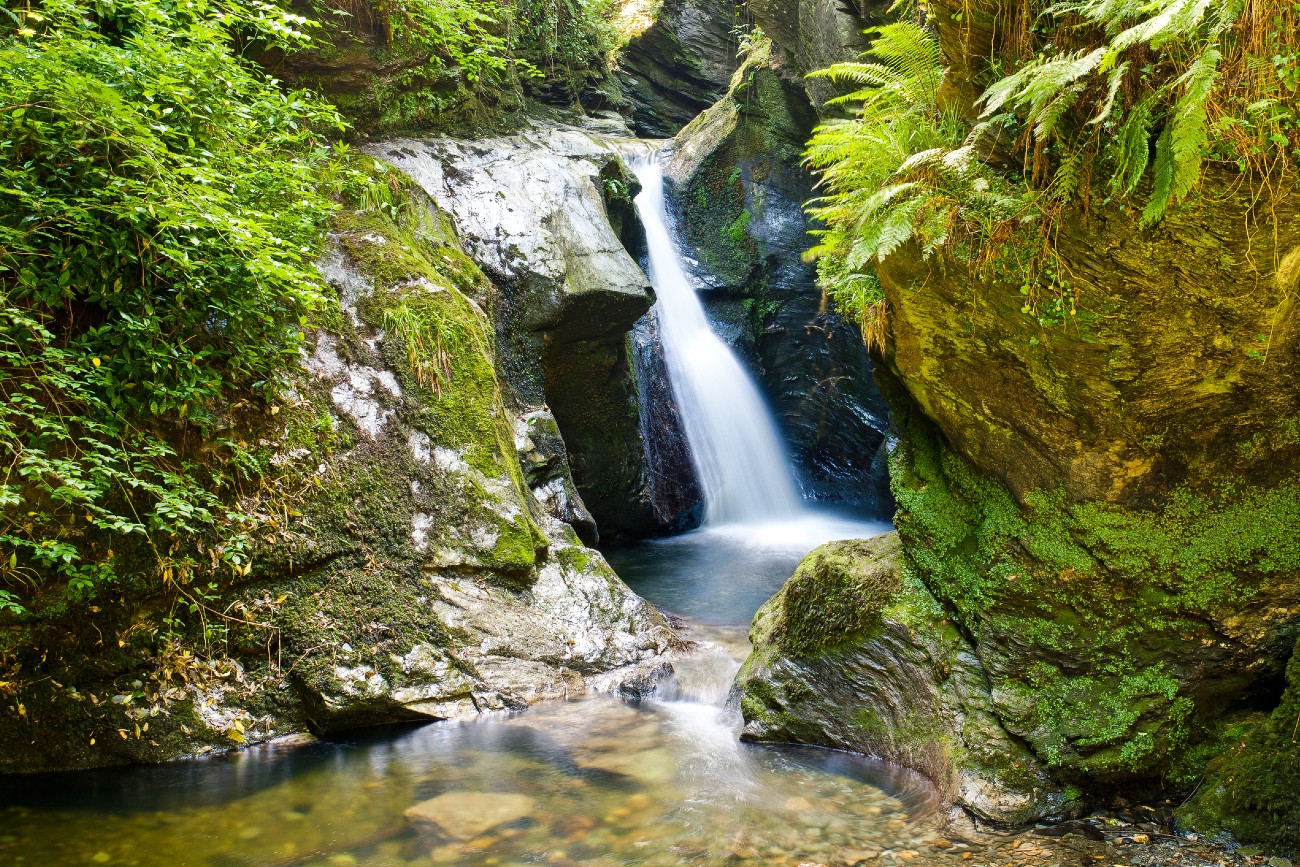
The leafy countryside of the Isle of Man is a place of verdant tranquillity, with cascading waterfalls, steep wooded slopes and native forest. More than 18 National Glens can be found scattered across the island, some near the coast and others in the mountains. These areas offer some of the most picturesque scenery in the region and are popular among photographers and artists alike.
Situated between Ballaugh and Kirk Michael, one of the most intriguing glens is that of Bishopscourt. This 14 acre glen stretches for about half a mile towards the inland hills and was once owned by the many Bishops of Sodor and Man. The glen was in a ruinous state in the late 17th century, however the Bishop at the time insisted the area be restored.
Thousands of trees were planted in an effort to return the area to its natural state, and the result is a glen that is now bursting with native vegetation. A lovely stream winds its way through the valley, forming a small lake where ducks and swans gather in large numbers.
Well-maintained paths weave throughout Bishopscourt Glen and I think it’s a great place to enjoy the peaceful Manx countryside. At the far end of the glen, there is a well-hidden cave that is very easy to miss. If you’re eagle-eyed enough to spot it, have a look inside and you’ll find a seat that has been carved out of the ancient stone. This seat is believed to have been used as a meditation spot by the various Bishops to have resided in the grounds.
Wonderful Waterfalls
Many of the Manx glens slope upwards over gentle gradients, but if you’re seeking a bit more of a challenge, consider visiting Dhoon Glen near Ramsey. This steep-sided valley rises up from the pebble beach at Dhoon Bay and is well-known for its rugged beauty.
The path down to the glen follows an old cart track that was once used to transport rock from the nearby lead mines. This path turns at the bottom of the glen to follow the valley inland through ash, elm and sycamore trees. The hidden gem of Dhoon Glen is the waterfall at the centre of the valley – the largest one on the Isle of Man. Known as Inneen Vooar, or the ‘Big Girl’, this waterfall cascades down over 40 metres of rock and can be a dramatic sight after heavy rains.
A few miles to the south of Dhoon Glen is another scenic Manx valley – Ballaglass Glen. This glen is home to some of the best examples of ancient forest on the island, with many mature oaks and beech trees which date back over 100 years old.
Late spring is the perfect time to visit, as the forest understory comes alive with a vibrant carpet of bluebells and other wildflowers.
Perhaps as a testament to the valley’s rich plant life, the glen’s name in the Manx language translates as ‘Place of Green’. Along with the incredible spring colours, the woodland at this time of year is the setting for a wonderful soundscape. The babbling streams and waterfalls are joined by a chorus of breeding birds, with Blackbirds, Robins and Wrens all making their voices heard.
- Polecat
- Glen at the Isle of Man
A Masket Bandit
Amongst the tranquil woodlands of the Isle of Man’s glens, there stalks a creature that was long perceived in the British Isles to be a blood-thirsty poultry thief and a pest. The animal unfortunate enough to have received this reputation is the European Polecat – a species closely related to the domestic Ferret. Polecats can be identified by their two-tone coats, featuring dark brown fur and lighter patches. Their faces are pale, but most individuals have a distinctive black mask over their eyes, giving them a sneaky, bandit-like appearance.
Many farmers used to view the Polecat as a threat to poultry farms, even believing that the species would chew off the ears of sheep or attack people from behind, biting their necks and paralysing them. Neither of these rumours have ever been found to hold any truth, and while these masked mustelids will sometimes target chickens, their diets consist largely of rabbits, mice and frogs.
Despite this, the species was severely persecuted for centuries, disappearing entirely from the Isle of Man, before being reintroduced during the 1600’s. Their fortunes have since changed and they are now found throughout the island, breeding successfully in the secluded glens and valleys surrounding the coast. Being nocturnal hunters, they are very difficult to see, but you might be lucky to spot one in the early hours of the morning.
The Manx glens are exceptional destinations for walking and wildlife watching. The towering trees, peaceful waterways and great scenery draw many visitors to these regions of the island, all hoping to make the most of the idyllic landscape. I highly recommend visiting this area of the island, you won’t regret it!
Would you like to explore outside the Isle of man? Then you should not miss this article: A Wild Land – The Calf Of Man


